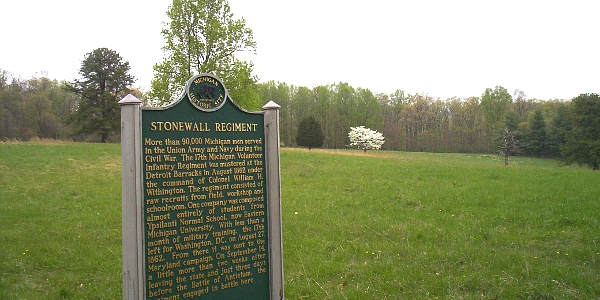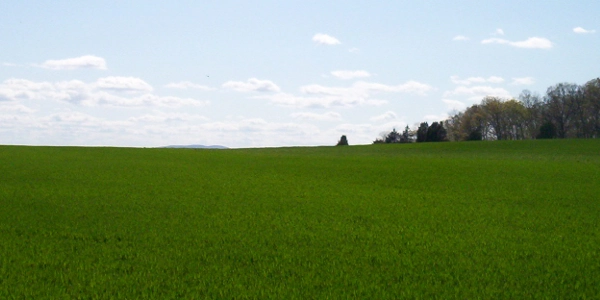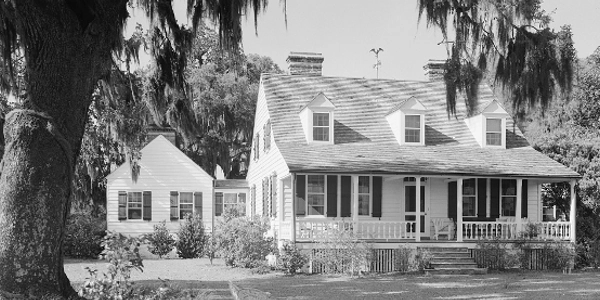
Photo above: Yukon River sunrise at Slaven's Roadhouse. Source: National Park Service.
America's Best History Spotlight
On this page we're going to Spotlight the lesser known historic sites and attractions that dot the history landscape across the USA and are worth a visit if you're in their area. And while they may be lesser known, some are very unique, and will be that rare find. You'll be, at times, on the ground floor, or maybe even know something others don't. It'll be fun. Visit them.

Yukon-Charley Rivers National Preserve
For those that visit our fifteen national parks in Alaska, it's really only five that get a serious amount of visitor attention; Denali, Kenai Fjords, Sitka, Glacier Bay, and Klondike. For the rest, they're all lesser known. So, for this month, we're picking one in the Yukon-Charley Rivers that isn't the least visited, although it's close, and our choice could have been any of the others. And maybe, we can urge a few hardy souls to trek past the big Alaska five, to one where, at slightly more than one thousand visitors, you'll never be worried about crowds. Unless you mean wildlife, and gold rush history, that is, both within the preserve or in the cities where you'll likely depart from by air or water, Eagle and Circle.
Photo above: Pristine waters of the Kandik River at Yukon-Charley Rivers National Preserve. Source: National Park Service.
- Info
- What is There Now
- History Nearby
-

Yukon-Charley Rivers and their Gateway Cities
It's harsh and has always been. Once you travel past the gateway towns of Circle, Eagle, or if you air from Fairbanks, this is wilderness. Tough in summer; unbearable for almost everyone in winter. So, while there's no surprise why Yukon-Charley does not get much visitor attention, it's not like there's nothing here to experience. For those that like gold rush history, you may not have to actually travel to the preserve itself, as Eagle, near the Visitor Center, has over one hundred period buildings from the gold rush days, plus Fort Egbert to visit. But for those who like to test their wilderness skills on a raft or backpack trip and know how to take care of themselves in any situation, the wildlife, white water, and river experiences here are unique. Yes, so unique, you'll be only one in a thousand or so to experience it each year.
Anything else still around in the preserve that might wet a history beak? Well, there's seven public use cabins, including Nation's Bluff (1934), Glenn Creek Cabin (1950s), Slaven's Roadhouse (1932), which can sleep up to thirty people, and Coal Creek Camp (1930s). And one mile off the Yukon River, there's the remnants of the Coal Creek Dredge, if that's of interest.
Image above: Main Street in Circle City, circa 1899. Photo courtesy Library of Congress.
-
Yukon-Charley Rivers National Preserve
What's There
Yukon-Rivers National Preserve - 2,183,173 acres of Federal land; 2,526,512 acres total. The preserve is land of a wild and scenice landscape surrounding the Yukon River (115 miles), Charley River (88 miles), and smaller waterways such as the Kandek River and 4th of July Creek. There are remnants of cabins and settlements from the Gold Rush days, including Slaven's Roadhouse, where you can still spend the night.
Eagle Visitor Center - Located on the Yukon River in Eagle, Alaska, the visitor center provides ranger orientation. In summer, there are also walking tours of the Eagle Historic District by the local Historical Society. In Fairbanks, the Fairbanks Alaska Public Lands Information Center can also provide information and orientation into a trip to Yukon-Charley. Remember, this is a harsh and remote place, only for experienced wilderness travelers. You may not see another person when in the preserve itself.How Many Visitors
1,133 visitors (2015).
How Much to Visit
Free.
Hours Open
Park is open year round. Be wary of winter weather, which is sub-arctic and very, very cold. Visit in summer, which is pleasant with low precipitation.
Where Is It Located
You can only get to the preserve itself by air or water, although you can drive to Circle or Eagle (Visitor Center) and float into the park from there. To get to the Eagle Visitor Center from Fairbanks, it's 370 miles, on AK-2 East, then AK-5 North. It's a lot closer to Circle, Alaska from Fairbanks, 155 miles up AK-6, but no Visitor Center there.
Website
Yukon-Charley Rivers National Preserve.
-
Area Historic Sites
So what else is there to do near Yukon-Charley Rivers National Preserve? Well, there's that large well-attended park Denali south of Fairbanks, as well as Fairbanks itself. If you're on your way to Y-C, there's the Tartana Valley State Forest and the Chena River State Recreation Area. In Eagle, there's the Eagle Historic District with over one hundred Gold Rush era buildings plus five buildings from Fort Egbert. Both Circle and Eagle boast populations around one hundred people.
Tanana Valley State Forest
Denali National Park
Explore Fairbanks
Chena River State Recreation Area
Photos, History, and More Spotlights

Eagle City Chronology
1874 - Log trading post, Belle Isle, built near Eagle.
1897-1898 - Gold discovered on American Creek. Twenty-eight prospectors leave high tax Canada and establish Eagle City near Athabascan Han Indian camp David's Village and Hudson Bay trading post Belle Isle.
1899 - Eagle City plat map chartered and town fathers promote town in Dawson City; nearly one thousand come to boomtown.
1899-1900 - Fort Egbert built next door as headquarters for North Alaska by Secretary of War; Judge Wickersham establishes Third Judicial Court in Eagle.
1903 - Judicial seat moved to new boomtown of Fairbanks; gold rush boom in Eagle over.
1911 - Fort Egbert closed by Army; signal station remained until 1938.
1978 - Eagle Historic District named National Historic Landmark by Department of Interior.
Image above: Eagle City in 1900 with newly arrived Army soldiers to inhabit Fort Egbert. Courtesy National Park Service, Alaska State Library, Wickersham State Historic Sites Collection.

Circle Chronology
1893 - Circle City established as supply depot for goods shipped up Yukon River to inland mining camps after discovery of gold at Birch Creek.
1896 - Circle City is the largest mining camp in the Yukon with 700 residents, Alaska Commercial Company Store, library, school, hospitals, dance halls, and Episcopal Church.
1897-1899 - Town is replaced as boomtown by gold discoveries in Yukon and Nome.
Eagle and Circle Today
Both cities are very small towns today, around one hundred people most years. While they are not within the Yukon-Charley Rivers National Preserve itself, they'll most likely be your gateway town to the park, or perhaps as far as you'll venture. Eagle has its historic district and buildings to peruse. Both towns have small campgrounds within them and a unique Alaska charm.
Photo above: Just one of the black bear wildlife you might see within the park. Photo courtesy National Park Service.

Photo above: Canoeing on the Yukon River. Source: National Park Service.
About
America's Best History where we take a look at the timeline of American History and the historic sites and national parks that hold that history within their lands.
Photos courtesy of the Library of Congress, National Archives, National Park Service, americasbesthistory.com and its licensors.



